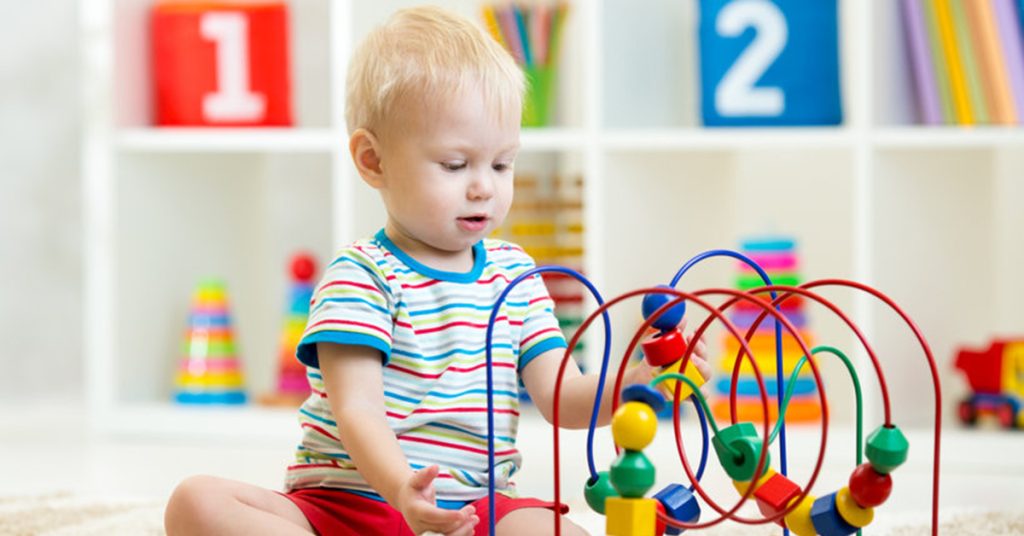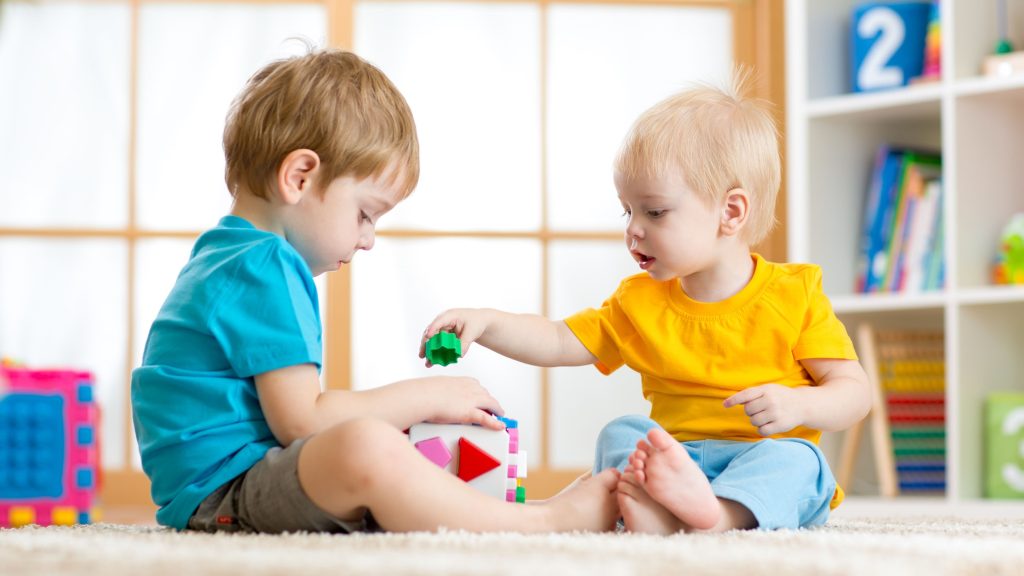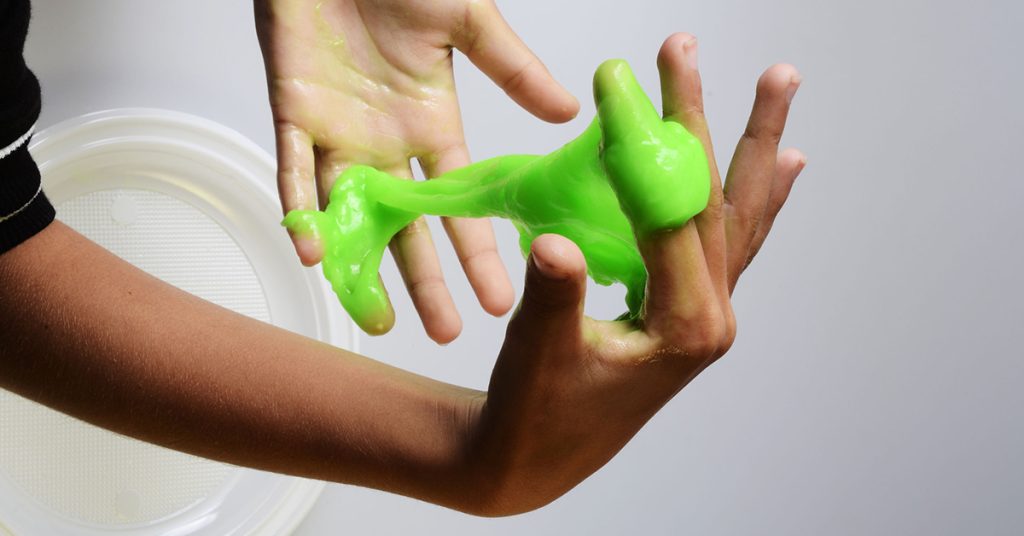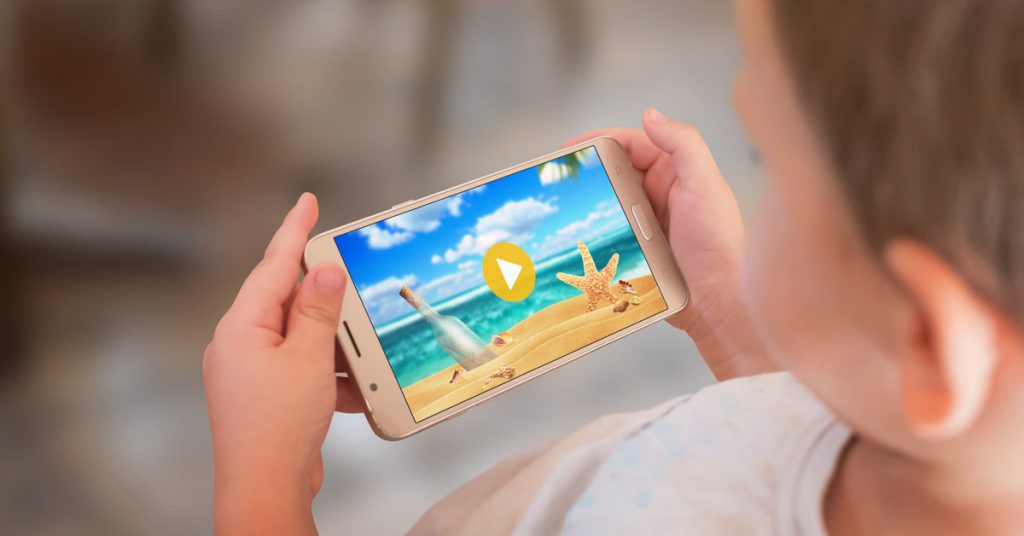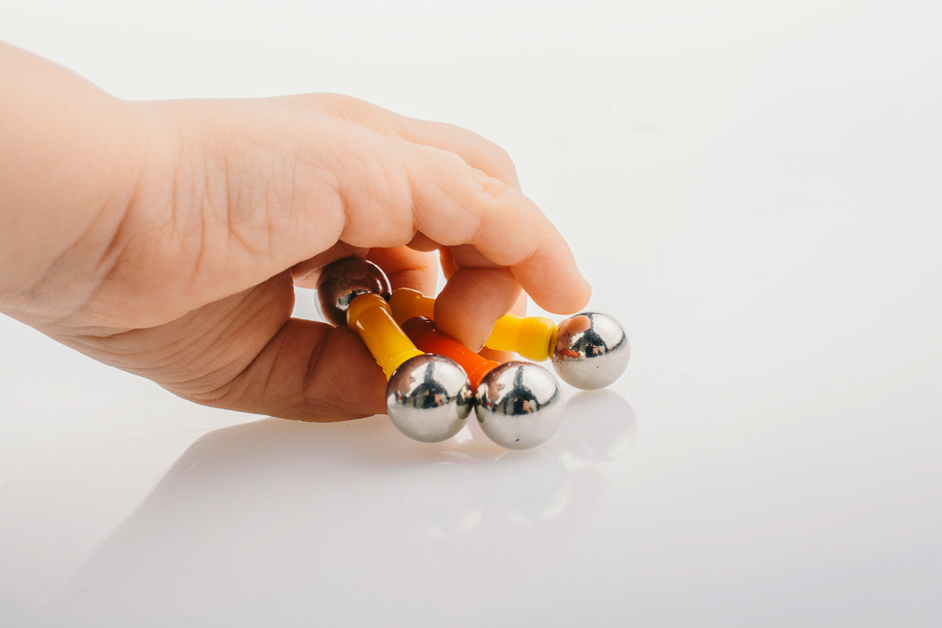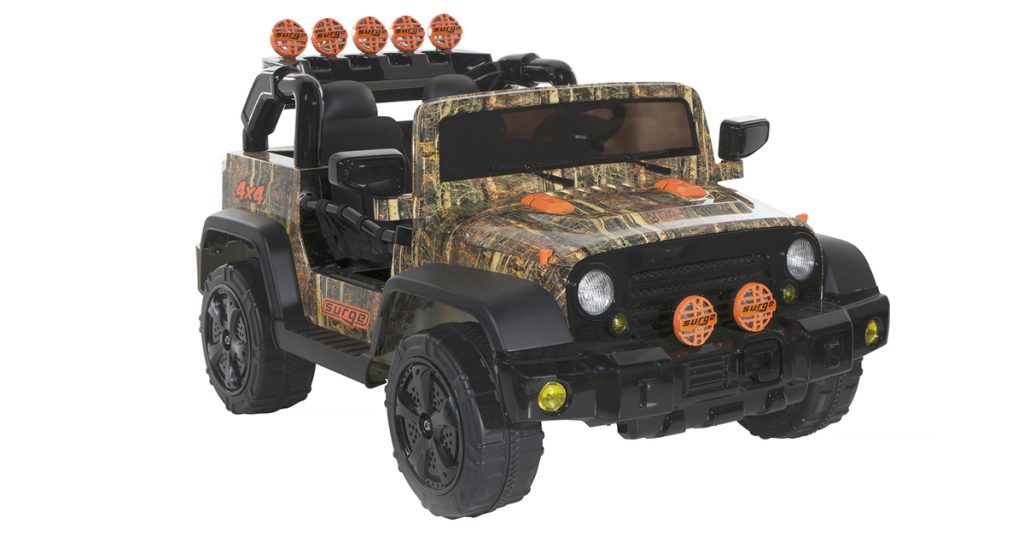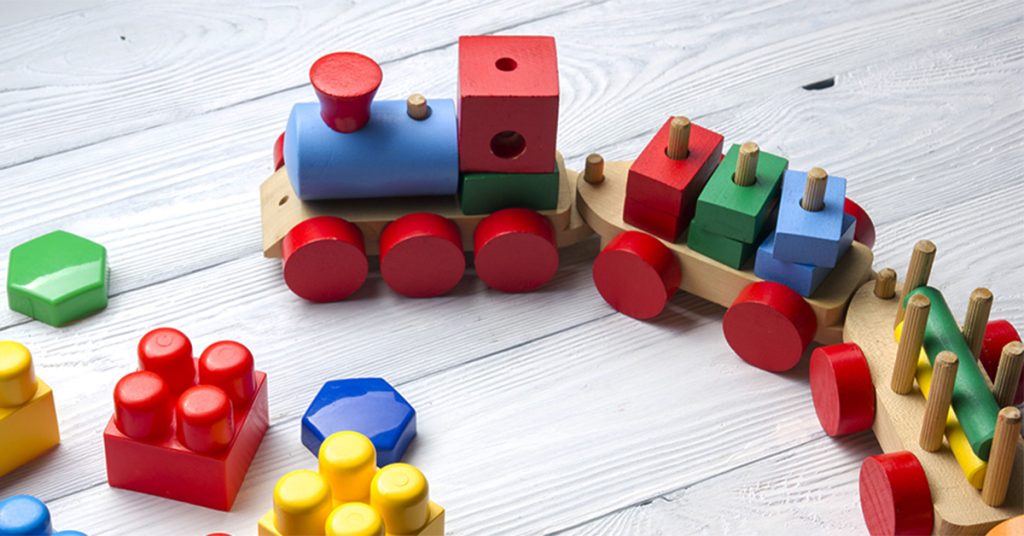Posts Tagged ‘Boston toy safety lawyers’
Don’t Rush; Reminders to Help Massachusetts Families Buy Safe Holiday Toys in 2021
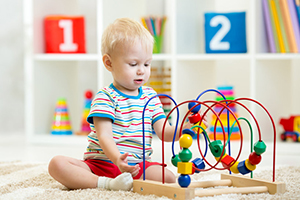
Don’t rush your holiday toy shopping. Take time to read and follow age-appropriate labels before you buy toys.
Many of us are feeling quite stressed about holiday shopping as we watch the news. Still, when you shop for a child, safety is essential. Slow down and look for a fun, safe and age-appropriate toy that will bring joy, not injury, into your home.
Read Age-Appropriate Warning Labels, Toy Packaging and Online Descriptions
You may think you are buying a safe because the toy was featured on a morning news program or has received top reviews online. But despite your best intentions, you may not actually be purchasing the same toy. To avoid buying a so-called counterfeit toy, look for reputable sellers, such as department stores. Try to purchase from brick-and-mortar stores.
Before purchasing or at home, closely examine the packaging on the toy and make sure it matches the manufacturer’s online description. If you purchased the toy online, the toy packaging should also match the description on Amazon or the online marketplace. Once the toy arrives, open and inspect the box contents.
Everything should be consistent, including the age-recommendation labels.
Check for Toy Recalls
The packaging is a tool to help you shop, as is the CPSC website, which you can check for toy safety recalls. In addition to recalling toys, the CPSC has also recalled many inclined infant sleepers over the past two years. Last summer, the commission approved a new federal safety standard for infant sleep products which will take effect in mid-2022. Here is one of our recent blogs on infant sleep products.
U.S. Toy-Related Injuries and Deaths by Age 2018-2020
No one wants to think about the possibility of a child suffering an injury while playing with their own toys. Yet this is a risk in when so many toys are sold online through Amazon, Ebay and other online marketplaces. Independent sellers can sell on these sites or quickly build their own websites, optimize them in the search engines, then close sites down.
Between 2018 and 2020, 50 children were killed in toy-related accidents across the U.S., according to CPSC data released in May 2021. Many children suffered suffocation and other injuries in accidents involving toys with small parts, balls, stuffed animals or accessories. Two children drowned on water toys. Seven children died in accidents involving non-motorized scooters and two were killed on nonmotorized riding toys.
In 2020, nine children were killed and nearly 150,000 children age 14 and younger were treated for toy-related injuries in hospital ERs. Here is a breakdown of toy-related injuries by age during 2020:
- Children under 5 suffered 40 percent of all toy-related injuries.
- Children age 12 and younger suffered 73 percent of toy-related injuries.
- Children age 14 and younger suffered 75 percent of toy-related injuries.
Common Toy Shopping Mistakes
As we have discussed, you can reduce the risk of injury in your household by reading age recommendations and carefully inspecting toys and packaging. But you can also challenge yourself if you have these thoughts:
Buying Holiday Toys Because Just They Are Available or Priced Right
Earlier this month, the Toy Association shared positive news: 76 percent of parents surveyed said they read age recommendations before buying toys.
However, many can be swayed. About 65 percent of parents said they may buy a counterfeit/knock-off toy if their first choice was unavailable. Meanwhile, 63 percent said they could be influenced by a lower price.
Buying Outside Age-Recommendations for Toys
“This toy is marked age 8 and older, but my 5 ½ year old is up for challenging toys .” Sound familiar? The Toy Association reports 68 percent of parents share this thought and would buy a toy outside age recommendations.
Consider age-recommendation labels an important tool, designed to protect your child from choking, an eye or head injury or a broken bone. Age recommendations are not arbitrary; they are based on a toy’s performance under federal toy safety requirements.
For example, toys with small parts or balls have to undergo the “small parts cylinder” test. The cylinder has a diameter of 1.25 inches, with a slanted bottom opening 1 to 2.25 inches. If a toy or small part passes through the cylinder, it has to carry an age-warning label that states, “Choking Hazard – Small Parts. Not for Children Under 3 Yrs.” Read more about the small parts regulations for toys.
Read more in our Project KidSafe toy safety series.
Free Legal Consultation – Boston Product Liability Attorneys
Founded in 1992, Breakstone, White & Gluck has recovered millions of dollars in compensation for victims of negligence and wrongdoing in Massachusetts. Consistently recognized by Super Lawyers and Best Lawyers, our personal injury lawyers specialize in product liability, holding companies responsible for injuries and wrongful death caused by defective products, toys and vehicles.
Breakstone, White & Gluck is located in 2 Center Plaza in Boston, across the street from the Government Center T stop and Boston City Hall. If you have been injured, Breakstone, White & Gluck offers a free legal consultation. Learn your legal rights by calling and speaking with one of our attorneys today at 800-379-1244 or 617-723-7676 or use our contact form.
How to Avoid Buying a Recalled Toy or Product This Holiday Season
 When a product is recalled, you may expect it will be removed from store shelves or online marketplaces. This is not always a safe assumption. In this year’s Trouble in Toyland report, U.S. PIRG reports several toys which were recalled this year were still being sold afterward on popular websites. Last year, a Wall Street Journal investigation found Amazon was selling thousands of unsafe or banned products.
When a product is recalled, you may expect it will be removed from store shelves or online marketplaces. This is not always a safe assumption. In this year’s Trouble in Toyland report, U.S. PIRG reports several toys which were recalled this year were still being sold afterward on popular websites. Last year, a Wall Street Journal investigation found Amazon was selling thousands of unsafe or banned products.
These are upsetting headlines. The Consumer Product Safety Commission (CPSC) recalls toys when they pose a safety hazard to children. Recalls are typically only called after a report or several reports of injuries or near injuries.
Once a toy is recalled, consider it unsafe to use. Our Boston product liability lawyers share our safety tips for steering clear of unsafe toys this holiday season:
Look Up Past Toy Recalls
Visit the CPSC website and review product recalls for 2020. According to U.S. PIRG, 10 products were recalled in the 12 months between the release of its 2019 and 2020 report.
You can visit this website after you have selected a toy and before you make a purchase. Or it may be helpful to start your holiday shopping there. Search for “toy recalls” or look through all the product recalls. Note that this website does not include automobile recalls. You can find these on the National Highway Traffic Safety Administration (NHTSA) website.
Beware of Amazon, Ebay and Marketplace Websites
Some retailers only offer their own products online. Others – such as Amazon and Ebay – are marketplaces where different vendors sell products and toys. These products may be new or they may be used.
Both the sellers and websites have a responsibility to make sure they are not selling recalled products.
In August 2019, the Wall Street Journal reported that Amazon was selling more than 4,000 items which federal agencies had declared unsafe or banned. Others had misleading labeling. At least 2,000 listings were for unsafe toys and medications.
The story showed the challenges Amazon has regulating its own marketplace. If you shop on Amazon or EBay, look for information about the seller. Is a company the seller or an individual? If you have never heard of the seller, you may not want to make a purchase.
Watch for Small Parts
When buying online, one potential danger is buying a toy which contains small parts. To protect your children, always read age recommendations and look for warning labels.
Toys which are designed for children under age 3 should be labeled if they contain small parts. Toys for children age 3 to 6 must also be labeled if they contain small parts. Read our blog on identifying small parts and toy safety warnings.
Beware of Purchasing Toys on Social Media Sites
You may have heard of Facebook Marketplace or other social media sites where you can sell used toys and products. Avoid buying used toys for children here during the holidays. We also suggest you avoid buying toys from these sites during other seasons, but especially during the holidays when many of us just wait for online sales to pop up.
There is no quality control. In most cases, the product is no longer in the packaging so you can’t read the safety warnings and age recommendations.
If you buy a used product this way, you really have no way of knowing when it was purchased. You may not have a product number or product instructions.
Children’s products, such as cribs, car seats and strollers, may carry the greatest risks. These products are frequently recalled and many model types look similar. While it is illegal to sell recalled products, it happens.
One frightening story came after Fisher Price and Kids II issued their crib recalls in early 2019. Despite this, 1 in 10 daycares was still using a Fisher Price Rock n’ Play sleeper in August 2019. In Nov. 2019, Consumer Reports reported found hundreds of the recalled sleepers available online, on sites such as Craigslist and Facebook Marketplace. In addition, Consumer Reports warned other products – including Ikea dressers recalled in 2016 were still being sold.
Free Legal Consultation – Boston Toy Safety Lawyers
With more than 100 years combined experience, Breakstone, White & Gluck of Boston specializes in the representation of clients injured by unsafe or defective toys and products. We are writing about toy safety this holiday season to help parents and families make safe shopping decisions. Read our past toy safety blogs.
For a free legal consultation, contact the Boston toy safety lawyers at Breakstone, White & Gluck at 800-379-1244 or 617-723-7676. You can also use our contact form.
Trouble in Toyland Report Shares Toy Safety Tips for Holiday Shoppers
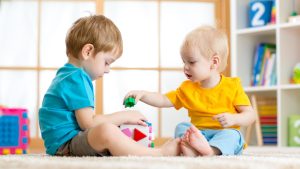 Families often enjoy looking through toy catalogs together this time of year. After seeing what excites your child, you may be tempted to immediately order their holiday gifts. However, before you do, we encourage parents and grandparents to check the Trouble in Toyland report.
Families often enjoy looking through toy catalogs together this time of year. After seeing what excites your child, you may be tempted to immediately order their holiday gifts. However, before you do, we encourage parents and grandparents to check the Trouble in Toyland report.
The 35th anniversary Trouble in Toyland report was recently released. This year, U.S. PIRG warned about the dangers of:
- Mislabeled choking hazards
- Flocked animal figures (toys with small attached pieces)
- Recalled toys which may still be available online
- Noisy toys
- In-app purchases
- Not advisable for children
Choking Hazards
Parents are advised to look for small part warnings on toys. “Small part” is not a subjective term. It is anything that fits within the Consumer Product Safety Commission’s toy test cylinder. The test cylinder measures 2.25 inches long and 1.25 inches wide and is roughly the size of a young child’s throat. A small part may be a game piece or a marble of the right size. It may also include a toy accessory, such as doll clothing.
The most common “small parts” warning: “WARNING: CHOKING HAZARD–Small Parts. Not for children under 3 years.” Toys designed for children ages 3 through 6 must also carry warning labels indicating they are not safe for children under 3.
Parents can become familiar with the risks by reading this year’s Trouble In Toyland. Make it a priority not to purchase a product with small parts and bring them into your home. Always read toy safety and age appropriate labels. Doing so puts you on a path to protect your family.
Flocked Toys
If you purchase a toy figurine or doll that comes with accessories, such as ribbons or clothing, remember your child can put those small parts in their mouths. Calico Critters – the popular animal family figures – are now under scrutiny.
One child was killed while playing with a set containing a small pacifier in New Mexico, according to a court filing. Another child in Utah also choked on the pacifier accessory, according to the a local news website, and shared in the Trouble in Toyland report. Both children were under 3 years old.
Fortunately, there are many versions of toys. If you find a toy you like and it has small fabric parts, keep looking until you find one without removable accessories.
Online Toy Shopping
Trouble in Toyland shared a valuable insight about searching for holiday toys on Amazon. If you search for “toys for 2-year-old boys,” for instance, you may see a number of listings which do not provide a small part warning. Do not trust that searching by year means toys are screened for safety. Remember, Amazon is a marketplace of merchants, not just one company. Closely look at product descriptions before making a purchase. In addition to reading reviews, you want to confirm the details. Look at the product picture, then read the description. Double check the product packaging once it arrives by mail and open it to confirm it has the parts you expected.
Beware of recalled toys as well. Since the 2019 Trouble in Toyland, the Consumer Product Safety Commissioned issued 10 toy recalls in the U.S., according to this report. When a product is recalled, it should be immediately removed from the store shelves and online listings. Some toys were still being sold online after recalls. Researchers even found one toy – a Fisher-Price Barbie Dream Camper which was recalled in February 2019 – still on sale. The camper was an outdoor riding toy for children. The CPSC received 17 reports of campers continuing to travel after the foot pedal was released.
Not Advisable For Children
Also featured was a section called, “items not advisable for children.” These items are not really toys, but are given to children as toys. At the top of the list is high-powered magnet desk sets. We wrote about the dangers of high-powered magnet sets last holiday season. Magnet sets may seem like fun gifts for adults, but you should never purchase one because they are so dangerous and the small parts can stick around your home forever. Children can be tempted to play with these magnets and swallow them. At this point, the magnets can attempt to connect together in a child’s stomach. The magnets touched on some serious personal injuries.
In September 2020, a 9-year-old boy took two magnets from a Neutronball building set and placed them on his lip, pretending to have a piercing. He then swallowed them and had to seek medical treatment at a hospital. In May, another 9-year-old swallowed parts from a Zen Magnets LLC set. She hid this from her parents for a week, until she began suffering intense stomach pain. She required surgery, but survived.
Beware of Digital Apps
Parents may be asked to sign up for an app related to a “smart toy” their child received as a gift. Or a child may have received a tablet or cell phone and try to sign up for apps themselves.
While there is a case to be made for limiting your child’s screen time overall, beware of giving your child access to digital apps. These can be tempting and children may like the graphics and thought of winning a prize. The Trouble in Toyland report mentioned one app called Coin Master. This is rated for ages 13 and over, though the graphics may easily capture the attention of a younger child.
We are sharing this story because Coin Master offers in-app purchases. The most expensive option is $99.99. Children may only see higher options once they get into the game.
Free Legal Consultation – Boston Toy Safety Lawyers
Breakstone, White & Gluck has over 100 years combined experience representing individuals who have been injured by the negligence or wrongdoing of others. Our firm is highly experienced in the area of product liability and injuries caused by defective products. We are writing about holiday toy safety as part of our Project KidSafe campaign, where our goal is to protect children from injuries. For the past 8 years, our attorneys have also donated 30,000 bicycle helmets to children across Massachusetts to protect against head injuries.
If you have been injured, learn your legal rights. For a free legal consultation, contact Breakstone, White & Gluck of Boston at 800-379-1244 or 617-723-7676 or use our contact form.
Worst Toys of 2019 List Showcases Holiday Hazards
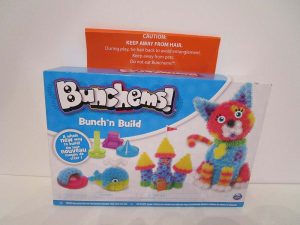
Photos: Worst Toys of 2019, W.A.T.C.H.
The Worst Toys of 2019 list has been released, providing parents and grandparents a preview of toys to avoid this holiday season. We urge you to read this list before you shop. Each toy mentioned has caused injury or has grave potential. We want Massachusetts families to steer clear and enjoy a safe and happy holiday season.
As you read, remember there are just 10 spaces on the Worst Toys list, which is compiled by W.A.T.C.H. – or World Against Toys Causing Harm, Inc. Yet there are far more toys out there which may be unsafe or inappropriate for your child’s age. Read our blog on the Worst Toys list, to help you identify common features in unsafe toys, such as small parts which could cause choking injuries.
Toy injuries are a daily risk for many families in Massachusetts, not just during the holidays. Across the country, 251,700 people suffered toy-related injuries in 2017. From 2015 to 2017, 37 children died while playing. These devastating numbers are preventable if manufacturers, distributors and retailers safely handle products throughout the supply chain. Parents can do their part by always reading and following age recommendation labels. Remember you also have help on this front. You can check the Consumer Product Safety Commission’s website for product warnings and recalls before you shop this holiday season, and throughout the year. You can also sign up for e-mail alerts.
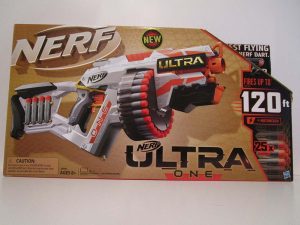 1- Nerf Ultra One
1- Nerf Ultra One
Though it looks like a blast, this Nerf toy is a $49.99 danger, W.A.T.C.H. says. The dart blaster shoots up to 120 feet and claims to be the “Farthest Flying Nerf Dart. Ever.” It carries an age recommendation of 8 and up, with several troubling warnings. W.A.T.C.H. reports the darts can be shot with enough force to cause eye injuries.
2 – Spike the Fine Motor Hedgehog
Spike is a risky toy because he comes with 12 removable quills, all 3 ½ inches long, W.A.TC.H. The problem is the packaging carries an age recommendation of 18+ months. This is deceptive, leading parents into conclude this is a safe toy for young children of that age. The age recommendation should be higher and carry a choking hazard label.
3 – Bumchems Bunch’N Build
These building toys stick together and make cute formations. What’s not cute is how they can get caught in your child’s hair. The manufacturer is clearly aware of this potential, advising parents to keep their child’s hair pulled back to avoid entanglement. Although they continue selling it, you don’t have to buy it. Carefully consider how your child and what could happen if you leave the room for a moment.
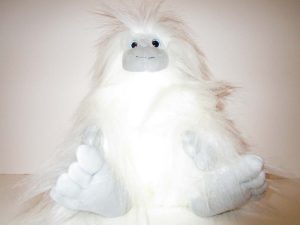 4 – YETI
4 – YETI
Pull at this doll’s white fur and with little effort, it becomes loose. Then it gathers, creating a choking hazard. The $21 toy is being sold everywhere this year, including Walmart.com, Target.com and Amazon.com. W.A.T.C.H. critically notes the toy has a recommendation of 24 months and up – on a removable sticker. Once this sticker comes off, consumers have to guess at the appropriate age.
Age recommendations are the most fundamental tool parents have in choosing safe toys. A removable label makes it hard to make safe choices, especially if you are handing the toy down between children.
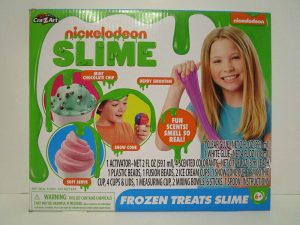
5- Nickelodeon Frozen Treats Slime
What can we say about this $9.99 slime toy? Or is it food? The truth is, it is a chemical which if ingested, can seriously harm your child. The confusing part is this slime really looks like a frozen treat on the box.
We urge you not to buy slime mixtures or any type of pretend food. There are plenty of other gift options. Traditional crafts such as drawing sets or even Play Doh are better choices. They don’t require any mixing of ingredients.
6 – Anstoy Electronic Toy Gun
W.A.T.C.H. is always critical of marketing realistic toy guns to children and has highlighted the practice over many years. This year it says the Anstoy electronic gun is being unsafely marketed for children age 14+ and can be found online by anyone with an Amazon account. We agree: steer clear of guns and choose toys which involve sports. A soccer ball, basketball or a new snowsled sound like great gifts to us!
7 – Diecast School Bus
This miniature school bus is a choking hazard because the small rubber tires can become loose. They are mounted on plastic wheels and can be pulled apart. So many toys have similar hazards and should be kept out of homes with younger children.
8 – Pogo Trick Board
This toy is a “high bounce ball” with dual handles for “tricking out.” The age recommendation is children 6 and up. The manufacturer warns children to wear a helmet to protect against head injuries. But the packaging shows two children using the board without a helmet. There is one child bouncing high while wearing a helmet, but overall, there’s not a strong advisory to parents.
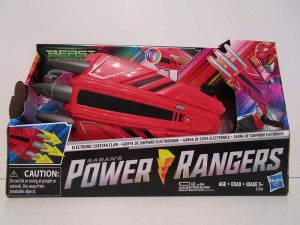 9 – Power Rangers Electronic Cheetah Claw
9 – Power Rangers Electronic Cheetah Claw
“Do not hit or swing at people or animals.” “Use away from breakable objects.” Finally, this toy carries a small parts warning, even though the age recommendation is 5+.
With so many warnings, why would you want to buy this toy? It may look cool to your child, but you have to remember it’s winter in Massachusetts. This is not a toy you want your child swinging around your home. Hasbro, the manufacturer, says the toy can cause potential eye or facial injuries.
10 – Viga Pull Along Caterpillar
This is an adorable toy, but it made the W.A.T.C.H. list because of its long string. This could cause a potential choking or strangulation hazard. The Viga Pull Along Caterpillar is a pull toy and should have a warning to go with its 24-inch cord.
Read more from the Worst Toys of 2019 on the W.A.T.C.H. website.
About Breakstone, White & Gluck – Free Consultation
Boston Product Liability Lawyers – Boston Defective Toy Lawyers
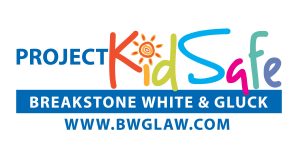 Breakstone, White & Gluck is experienced in representing those injured in Massachusetts in cases involving product liability and defective products. Manufacturers have a responsibility to conduct safety testing and properly label toys with age recommendations. When they neglect this responsibility, toys are not safe to use.
Breakstone, White & Gluck is experienced in representing those injured in Massachusetts in cases involving product liability and defective products. Manufacturers have a responsibility to conduct safety testing and properly label toys with age recommendations. When they neglect this responsibility, toys are not safe to use.
We share this blog as part of our holiday toy safety series and our Project KidSafe campaign. Learn more about Breakstone, White & Gluck and our work for clients on our website.
Take Caution Buying Children Digital Toys, Tablets and Apps
 Many children are asking for tablets, video games and digital toys this holiday season. Before you buy, really learn what you are introducing – and our suggestion is consider waiting. This year, companies such as Google were pressured to change their data collection practices. In 2020, we may just see some change from other companies, too. Read More
Many children are asking for tablets, video games and digital toys this holiday season. Before you buy, really learn what you are introducing – and our suggestion is consider waiting. This year, companies such as Google were pressured to change their data collection practices. In 2020, we may just see some change from other companies, too. Read More
Holiday Toy Safety: Check for Age Recommendations and Choking Hazard Labels
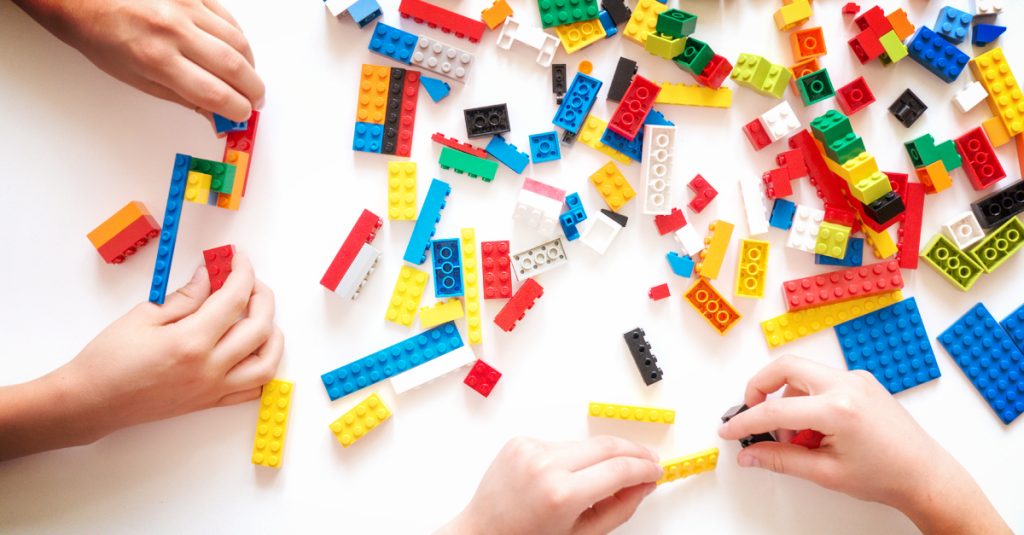 Age recommendation labels are the first tool you have in selecting safe holiday toys. Anyone purchasing toys for young children wants to familiarize themselves with the choking hazard-small parts label.
Age recommendation labels are the first tool you have in selecting safe holiday toys. Anyone purchasing toys for young children wants to familiarize themselves with the choking hazard-small parts label.
Warning: Choking Hazard – Small Parts. Not for Children Under 3 Years
Each year, children suffer choking injuries and deaths after consuming food or putting small objects in their mouths. In the late 1970s, the Consumer Product Safety Commission (CPSC) led a three-month study of an estimated 3,800 injuries involving children under age 10. It was determined that children under age 3 suffered more than half of all these injuries. More than 50 children under 3 died in accidents involving small parts.
With those numbers, the CPSC announced the small parts regulation, which became effective on January 1, 1980. Since then, toy manufacturers have been required to test toys and parts using the small parts cylinder test.
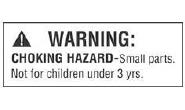
This cylinder has a diameter of 1.25 inches. The bottom of the cylinder is slanted, opening 1 to 2.25 inches. Toys which fall through the cylinder must carry the choking hazard – small parts warning and state not for children under 3 years old. Toys may also require labels if they fit through the tube, but break it during subsequent “use and abuse” testing (Source: U.S. PIRG, Trouble in Toyland 2018).
Toys which are too large can be sold without the choking hazard label, though they may require another type of labeling.
Small Parts Warning for Children Between Ages 3 and 6 Years
Any small part intended for children between age 3 and 6 must carry the same labeling: “Warning: Choking Hazard — This toy is a small part. Not for children under 3 years.”
Small Parts Warning – Small Balls
There is a separate federal standard for small balls, according to U.S. PIRG. Balls with a diameter of 1.75 inches are banned for children younger than 3 years of age.
Small balls must carry this age-recommendation label: “Warning: Choking Hazard — This toy is a small ball. Not for children under 3 years.” A similar label is required for toys which contain small balls: “Warning: Choking Hazard–Toy contains a small ball. Not for children under 3 years.”
Toymakers are required to test and use age recommendation labels. All toys intended for children age 12 and younger must undergo third-party testing and meet the most recent version of the federal safety standard, ATSM F963.
But there are times when parents and anyone buying a toy should be skeptical. Toymakers have made errors in labeling and there can be miscommunication between manufacturers and retailers when toys are displayed without packaging. Online product descriptions may not be accurate.
Remember These Toys Have Small Parts!
- Marbles
- Magnets
- Game pieces (such as the Monopoly characters)
- Legos and building bricks
- Small puzzle pieces (and cardboard pieces are a danger because small children can chew them and choke)
- Button batteries
- The clothing and parts on stuffed animals and dolls
- Pens and pencils with caps which can become loose
Additional Toy Safety Standards for Children Age 3 and Younger
While we are talking about small parts, we also want to remind parents of other federal toy safety guidelines for children under 3.
- Toys and children’s products must not have sharp points or edges which can potentially injure children.
- Paints and surface coating cannot contain more than .06 percent lead or other hazardous materials.
- Children’s pajamas, clothing and products which fail to meet flammability limits.
The best way to stay informed is to check the CPSC website for toy safety recalls and product warnings.
Final Points on Toy Safety for Young Children
Carefully inspect all toy sets and stuffed animals before and after purchase. Open boxes, handle the pieces yourself before giving. If you buy online, check if the box matches the online product description. Because of the demand for toys near the holidays, it’s not unusual for shoppers to receive a toy similar to what they ordered.Decide whether the toy will be safe near your child and their siblings. You should always consider younger siblings when buying gifts. If they are not at least 3 or older, wait another year. Also pause if the younger sibling just isn’t ready.
If your children are the right age and ready, purchase a secure container to keep the small parts in. Keep this container separate from other toys in your home and be mindful of not letting small pieces scatter.
Finally, supervise children whenever they play with small parts. Even older children can find themselves in dangerous situations at times when handling small pieces. This is especially true with new toys. So as they play, sit with them at the table or just stay in the room so you can help.
About Breakstone, White & Gluck – Boston Toy Safety Lawyers
 Our Boston personal injury lawyers represent clients in all personal injury matters, including motor vehicle accidents, medical malpractice, premises liability, wrongful death and cases involving injuries caused by defective products and unsafe toys. We share our holiday toy safety series as part of our Project KidSafe campaign.
Our Boston personal injury lawyers represent clients in all personal injury matters, including motor vehicle accidents, medical malpractice, premises liability, wrongful death and cases involving injuries caused by defective products and unsafe toys. We share our holiday toy safety series as part of our Project KidSafe campaign.
To learn more, visit our toy safety page. You can also visit our website to learn more about our attorneys and their experience.
Keep Magnet Toys Off Your Holiday Shopping List
We urge parents to keep magnet toys off your holiday shopping list for young children. High-powered “rare-earth” desk magnet toys are highly dangerous and there are many painful stories of children ingesting them, then fighting for their lives in surgery. But there are also other types of magnet toys, including magnet tile building sets and magnet construction toys. While these are very popular, this doesn’t mean they are safe for your family. Take time to do your research, read age recommendations and really consider your children’s needs.
Magnet Desk Toys or Cluster Magnet Toys
Read by product type:
Magnet Desk Toys or Cluster Magnet Toys
Tile Magnet Toys
Magnetic Construction Sets
Final Word on Safety
Magnet Desk Toys or Cluster Magnet Toys
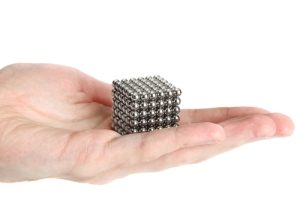
Cross desktop magnet sets off your holiday shopping list. These have caused hundreds of children injuries.
The Consumer Product Safety Commission (CPSC) has worked to take desktop magnet toys off the market to prevent injuries to children. The problem is the average set has 125 or 216 strong magnet balls, though some have more than 1,000 pieces. The magnets are tiny and are extremely high-powered.
These magnet sets come apart and can be reassembled into unique shapes. In a child’s hands, the magnet clusters may become a necklace, triangle or whatever formation they imagine. When magnets are put in a child’s mouth, they can attract to each other, causing serious injuries in the digestive system as well as blood poisoning. Children usually require surgery for the intense pain.
New Magnet Safety Standard. Prior to 2014, “rare-earth” magnet sets were required to carry age recommendation labeling of 14 and older. In 2014, the CPSC established a federal toy safety standard which required magnets to be large enough to exceed the CPSC’s “small part” standard for toys or that magnetic parts have a force of attraction of 50 kG² mm² or less, according to the CPSC’s Final Rule: Safety Standards for Magnet Sets. The CPSC safety standard effectively made it illegal to sell “rare-earth” magnet sets in the U.S. and there was a positive response, an 80 percent reduction in magnet-ingested injuries, according to The Journal of Pediatrics.
You may guess young children are at the highest risk. But children age 4 through 12 suffered the most injuries in the CPSC’s analysis of ER visits over 5 years, from 2009 to 2013. According to the Federal Register dated October 3, 2014, the agency concluded an estimated 2,900 children had suffered magnet ingestion injuries. Children age 4 through 12 suffered 1,900 injuries – or 65 percent.
Tile Magnet Toys
For all this work, in 2016, the 10th Circuit of Appeals ruled the CPSC’s pre-requisite factual findings were “incomplete and inadequately explained.” The Court vacated the safety standard and remanded it back to the CPSC for further proceedings.
The lawsuit had been filed by Zen Magnets, one of the “rare-earth” magnet makers. The company is now selling its products again, under the Buckyballs and Mandala names, according to Tech Crunch. Again, we stress, please don’t buy these toys, especially if you have children or a pet. The parts are small and scatter easily. If you don’t find our blog compelling, we encourage you to read this article in STAT, called “Toy magnets are harming kids again. They need to be banned – for good,” August 6, 2019.
Tile Magnet Toys
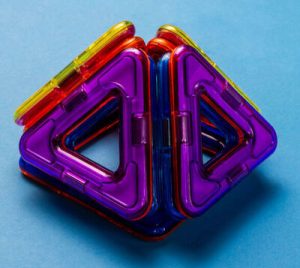
Magnet tile toys
These are magnets encased in plastic triangle and square shapes. These are popular, marketed as toys that help stimulate learning and imagination. Some of these are designed for children under age 3, some for children ages 3 and up; others are for age 6 and up. If you do purchase one of these sets, carefully check the age recommendation and secure it in a container out of reach of children.
There has been at least one case of the encasements opening and a child swallowing magnets. Last December, a Wisconsin mother shared her frightening story on social media and the Today Show reported on it. The woman’s 4-year-old son had swallowed 13 magnets from one of the tile magnet kits. After he began vomiting, she rushed him to a local hospital where surgeons had to remove part of his colon, intestine and appendix. The product manufacturer was not identified in the story.
The CPSC regularly issues recalls about toys containing small magnet parts. One of the largest recalls involving tile magnet building toys came in 2006, when Mega Brands America, Inc. recalled 4 million Magnetix Magnetic Building Sets. The recall was first announced on March 31, 2006 and re-issued and expanded in April 2007. The CPSC reported one child had died and one child had suffered aspiration. 27 others had suffered intestinal injuries, according to the CPSC news release.
The tragedy could have claimed even more lives; there had been 1,500 reports of magnets coming apart. Although the Magnetix Magnetic Building Sets were labeled age 6 and older, at least 10 injuries involved older children, up to age 11.
Magnetic Construction Sets
According to CBS News, in October of 2006, Mega Brands America settled a lawsuit with 15 victims for $13.5 million.
In 2009, consumers learned there was further wrongdoing in this case. On April 14, the CPSC announced that Mega Brands America, Inc. had agreed to pay a $1.1 million civil penalty to settle allegations that the company (and Rose Art Industries, which it had acquired) had failed to provide timely information about product dangers to children.
Magnetic Construction Sets
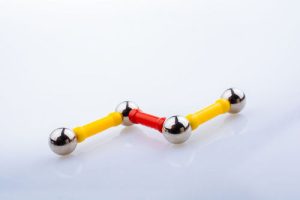
Magnet construction sets typically have magnets snap together with other stick pieces.
These sets include plastic rods and balls which can be snapped together with the magnet attraction.
Final Word on Safety
One problem is Consumer Reports found a full range of age recommendations across several popular products – and manufacturers unwilling to answer questions. Since age recommendations are the most fundamental tool consumers have, we recommend steering clear of these.
Final Word on Safety
The CPCS is responsible for overseeing product recalls and a quick search of its database can glean valuable information for parents. Visit www.cpsc.gov and search by product name or type of products. You can also visit the CPSC’s magnet information center.
With magnet toys, product regulations and age recommendations continue to change. They are very challenging to bring into any home safely, but especially homes with children of various ages and development skills and pets. In the end, you must make your own decision, but we urge you to be overly cautious and purchase other toys. There are so many other toys out there which can provide your child with a safe and enjoyable experience.
Breakstone, White & Gluck – Boston Toy Safety Lawyers
Breakstone, White & Gluck is a Boston law firm specializing in personal injury, medical malpractice and product liability. We wish Massachusetts families a safe and healthy holiday season and share our toy safety tips as part of our Project KidSafe campaign.
If you have been injured, contact Breakstone, White & Gluck to learn your legal rights at 800-379- or 617-723-7676. You can also use our contact form.
Trouble in Toyland Report Offers Valuable Warnings For Holiday Shoppers
There is “Trouble in Toyland.” For the 33rd year, U.S. PIRG has released its annual survey on toy safety. This is a widely respected survey, which over the years has dispensed valuable information to protect children and families. The survey has led to the recall of more than 150 unsafe toys.
Highlights from this year’s report:
- Toys which have been recalled for safety issues over the past year
- Toys which contain high levels of toxic materials, such as boron
- Toys which do not meet labeling requirements
- Toy regulations
Toy recalls
Over the past year, the Consumer Product Safety Commission (CPSC) announced more than 40 recalls of toys and children’s products, such as wagons and strollers. These recalls represent 2.7 million units. During its survey, the group did not find any recalled toys or products still being sold. This is good news for consumers, but you still need to check products for yourself by going online. You can visit the CPSC Recall list.
You can also check the U.S. PIRG’s “Trouble in Toyland” report, so you can be informed while you shop or to see if you have any recalled toys in your home (See Appendix 4, page 29). Many people do not hear about recalls so it’s worth checking.
If you find a recalled product, you can contact the manufacturer for a refund or a repair. In some cases with inexpensive toys, it may be best just to discard it from your home in a safe way. Move onto other toys.
U.S. PIRG has long advocated for improvements to the CPSC’s recall system. One concern is that companies are not required to report how many consumers actually return products for repairs or refunds.
Toxic Materials
The report focused on two toxic materials in toys: Lead and boron.
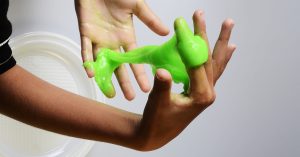
Beware of Slime: U.S. PIRG Researchers found 6 popular Slime sets which contain dangerous levels of boron.
Lead. Lead was banned from household paint, children’s products and cookware 40 years ago. But federal law states children’s products made after August 2011 can contain no more than 100 parts per million. Because lead is highly dangerous when breathed in, be careful when buying toys such as paint sets and other products. Electronic devices can contain some lead parts, as can metal components of bicycles. The American Academy of Pediatrics (AAP) recommends all products for children contain no more than trace amounts of lead (40 ppm).
Boron. Your child may be begging you to buy one of those popular slime toy sets. U.S. PIRG says you can’t trust these products are safe. Researchers found six slime products on the market had dangerously high levels of boron. One brand, “Kangaroos Original Super Cool Slime,” contained concentrations as high as 4700 parts per million (ppm).
Boron is a chemical element used mostly in glass manufacturing, pesticides, antiseptics and detergents. Children can ingest small amounts, even less than 3.68 ppm and suffer symptoms of nausea, vomiting and potentially longer term impacts on reproductive health. The Environmental Protection Agency (EPA) reports certain levels can even be lethal. Say the “Kangaroos Original Super Cool” slime has up to 4700 parts per million (ppm). Then consider that six states have made recommendations on boron limits in drinking water, non exceeding 1 ppm. It’s a frightening discrepancy. U.S. PIRG has asked the CPSC to explore setting limits on boron levels, as Canada and other countries have.
We recommend parents spend their money elsewhere this year. There are so many toys out there, which your child would enjoy without risk to their safety. Likewise, if your child plays at another friend’s home or goes to daycare, make sure the adult in charge knows you don’t want your child playing with slime sets.
| Slime Toys with Dangerous Levels of Boron |
| Kangaroos Original Super Cool Slime – Amazon – 4700 ppm |
| Kidsco Glow in The Dark Slime – Amazon, Walmart – 4600 ppm |
| Toysmith Jupiter Juice Slime – Amazon, Walmart – 1900 ppm |
| iBaseToy Fluffy Slime – Amazon – 1500 ppm |
| Haniex Soft Magic Crystal Slime – Amazon – 1400 ppm |
| Meland Fluffy Slime Amazon Boron – 1100 ppm |
| Data from U.S. PIRG “Trouble in Toyland” Report 2018. |
Labeling
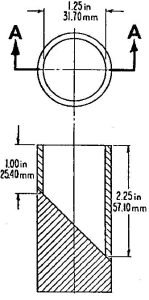
Drawing of the small cylinder test for toys. Credit: CPSC website.
Toymakers are responsible for properly labeling their products, especially those with small parts which are not intended for children under age 3. This warning is essential. Children are often putting small parts in their mouths. From 2001 to 2016, more than 110 children died this way, according to U.S. PIRG.
What’s important for consumers to know is the CPSC has a Small Parts Ban. Toys must be tested to make sure they cannot pass through a test cylinder, which has a diameter of 1.25 inches. The cylinder has a slanted bottom, opening 1 to 2.25 inches. If a toy can pass through, it must be properly labeled: WARNING: Choking Hazard-Small Parts. Not for Children Under 3 Yrs.
Researchers identified a few toys which are being sold online without age appropriate labels this year – Hatchimals and L.O.L. Surprise toys. Parents should watch and carefully inspect every purchase you make. A good rule of thumb is to open every toy well in advance of giving it to a young children. Open it out of your children’s reach, such as in a basement.
Balloons are another product which are not being labeled properly. Balloons should come with warnings that they are a potential choking hazard to children under 8 years old. Yet, 87 percent of the latex balloons on Amazon.com carried no warnings, according the survey.
Toy Regulations
As consumers, we deal with packaging, price tags and shipping dates more than regulations. But the “Trouble in Toyland” report shares three important regulations on page 17:
- Small Parts Ban (1979)
- The Child Safety Prevention Act of 1994
- The Consumer Product Safety Improvement Act of 2008
Read the 2018 “Trouble in Toyland” report.
About Breakstone, White & Gluck
Free Legal Consultation: 800-379-1244
Breakstone, White & Gluck of Boston specializes in handling personal injury and product liability cases. This holiday season, we are committed to sharing toy safety tips as part of Project KidSafe campaign. We wish you a safe and healthy holiday season.
Learn more about our firm: www.bwglaw.com.
Hitting the Safety Brake: A Warning About Battery-Operated Ride-On Toys
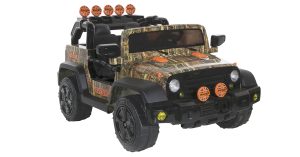
Dynacraft Ride-on Toys recalled 20,000 battery-operated ride-on toys after reports that the pedals were not working in 2017. Always check for product recalls before you buy any holiday toy. Photo credit: Consumer Product Safety Commission notices.
Battery-operated ride-on toys may look like fun holiday gifts. Parents and grandparents even have their choice of models, including the Jeep, Mercedes-Benz and Lamborghini to name a few.
Shoppers can get easily caught up in the “cuteness” factor. It’s not that simple, though. Ride-on toys can be heavy and motorized. Be cautious when buying, even with push or pedal ride-on toys, because you are trusting these toys to support your child.
The Consumer Product Safety Commission (CPSC) has been working to improve safety for ride-on toys, because children have suffered injuries and even deaths. In 2016, three children died in riding toys in toy-related injuries, all encounters with motor vehicles (Source: CPSC). Riding toys, motorized and non-motorized, were associated with the highest number of toy-related deaths that year – or 43 percent.
Before you buy, please step on the brakes and consider our safety tips.
Potential Harm: Motor Vehicles and Fires
Why are riding toy cars so dangerous? The greatest danger is children can be hit by adult-sized vehicles. But motorized toy cars can also overheat, as a North Andover family learned last August. A mother had the terrifying experience of having to pull her children out of a toy car, just after smoke started coming from the hood and before the flames. Other potential issues are children can attempt to stand and cars can tip, resulting in head injuries. Remote controls can provide parents a false sense of security. Parents may have more control just pushing their children in a non-motorized toy.
Safety Tips for Buying Ride-on Toy Cars
- Steer clear of motorized, battery-operated toy cars. Consider buying a tricycle or another non-motorized toy instead.
- If you buy a battery-operated toy car, look for the age recommendation. Many of these toys are recommended for children age 2+, which we feel is too young. But the age recommendation is a starting point for many families.
- Check the label to see if the riding toy meets the CPSC’s toy safety standards. In 2016, the federal toy safety standard, ASTM F963, was specifically updated to address overload, stability and restraints on riding toys.
- Check if the toy car has been recalled on the CPSC website.
- It’s not just toy cars. Any riding toy with a motor can malfunction. Last March, the CPSC recalled these Radio Flyer electric wagons due to motor problems.
- Read the product specifications and instructions online before purchasing. Consider whether you have the time for this type of toy.
- Test the riding toy before your child rides.
- Always supervise your children when they ride. Stay on the driveway and sidewalks near your home. Fenced in areas, such as backyards, are best if the product is designed for use on grassy surfaces.
- Protect your child’s head with a bicycle helmet.
- Follow instructions for properly seating your child. Ride one child at a time.
- Find a safe place to park the riding toy. Commit to properly securing it after each use.
- Keep the box. When your child outgrows the riding toy, remove it from your home.
Free Legal Consultation: 800-379-1244
For more than 25 years, Breakstone, White & Gluck has represented those who have been injured or killed by defective products which should have never been sold. This holiday season, our Boston personal injury lawyers are committed to helping consumers make informed buying decisions to prevent toy-related injuries.
If you have been injured in a motorized toy car accident or any other type of accident, our attorneys offer a free legal consultation and can help explain your rights for seeking potential compensation. Call 800-379-1244 or 617-723-7676 or use our contact form.
The 10 Worst Toys of 2018
W.A.T.C.H. has released its annual nominees for the 2018 Worst Toys list. The Boston non-profit warns shoppers to steer clear of the following toys this holiday season:
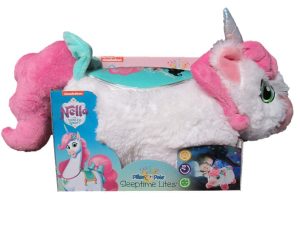
Photo courtesy: W.A.T.C.H. 2018 Worst Toys report.
Nickelodeon Nella Princess Knight Pillow Pets Sleeptime Lites
Parents should never leave infants in their cribs with toys, especially those with small pieces or strings. This toy is marked for ages 0+, for use as a nightlight or bedroom toy. While it does carry some warning labels – warning parents not to leave it in the crib or let children play with it unattended – this isn’t enough to protect children. W.A.T.C.H. cited this and other hazards, including small accessories and a warning about batteries which can leak. This toy is being sold online through Target.com and Google Express, as well as in Target stores.
Nerf Vortext VTX Praxis Blaster
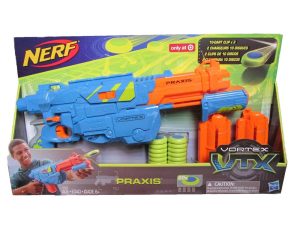
Photo courtesy: W.A.T.C.H. 2018 Worst Toys report.
Nerf toys have received bad press for causing eye injuries. In this case, the Nerf gun is recommended for users age 8 and older and can shoot 10 discs in a row. W.A.T.C.H. calls this a potential hazard for eye and facial injuries. The blaster is sold at Target. Target.com, Amazon.com, Walmart.com, Ebay.com and Bonanza.com.
Marvel Black Panther Slash Claw
These make the list because they can cause injuries and can encourage hitting. The claws are encouraged for children age 5 and older and the packaging states children can “slash” like the Black Panther.” At the same time, the packaging also advises children not to swing at other people or animals and to steer clear of breakable objects. If children use the toy, they are likely to break all those warnings, which is why W.A.T.C.H. included it this year.
Power Rangers Super Ninja Steel Superstar Blade
This is a sword-like toy and made the list for poor taste and the potential for facial and other impact injuries.
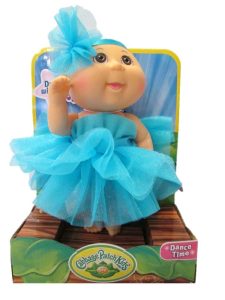
Photo courtesy: W.A.T.C.H. 2018 Worst Toys report.
Cabbage Patch Kids Dance Time Doll
You may think this is a sweet, fun gift. But the toy has a removable headband, which W.A.T.C.H. says can be ingested. The toy is marketed for children age 2+ and is sold at Target, Target.com, CabbagePatchKids.com, Bonanza.com and Blinq.com.
Zoo Jamz Xylophone
This Vtech brand toy made the list for presenting a potential choking hazard. A young child could put the drumstick handle in their mouth and block their airway, W.A.T.C.H. says. The product is designed for children age 1 1/2 to 4 years old. It is sold at Walmart, Walmart.com, as well as Amazon and other retailers.
Nici Wonderland Doll: Miniclara the Ballerina
This pink ballerina and her kitten are not safe, W.A.T.C.H. says. There is nothing wrong with the little girl, but the kitten can become detached and a child could ingest it. A few of the retailers selling the toy: Amazon.com, Walmart and Barnes & Noble.com.
Stomp Rocket Ultra Rocket
This product is for children age 6 and older. Children are supposed to step onto the pedal to launch the rocket. The rockets can go high – up to 200 feet. W.A.T.C.H. recommended parents keep it off their holiday shopping lists this year, saying it can cause serious eye or face injuries.
Cutting Fruit
Magnetic fruit toys with a hard plastic knife are not a safe gift, W.A.T.C.H. says. The set is marketed for children age 2+, even though the knife can be used to cause puncture wounds.
Chien Á Promener Pull Along Dog
W.A.T.C.H. says this toy falls between regulations and safety. Manufacturers can only market toys with strings under 12 inches for use in cribs and playpens. Pull toys don’t have the same restriction and the result is a toy with a 19-inch draw string can legally be sold to children. The age recommendation on this product is only 1-3 years old. There are no safety warnings. It is available on Amazon.com, Magic Beans and Mbeans.com.
More information on the 10 Worst Toys of 2018 list.
About Breakstone, White & Gluck
Breakstone, White & Gluck is a Boston law firm specializing in personal injury and product liability claims. We represent those who have been injured by the negligence and wrongdoing of others. If you have been injured, it is important to learn your legal rights for seeking compensation to cover lost wages, medical care and other financial losses. For a free legal consultation, contact the Boston personal injury lawyers of Breakstone, White & Gluck at 800-379-1244 or 617-723-7676 or use our contact form.


